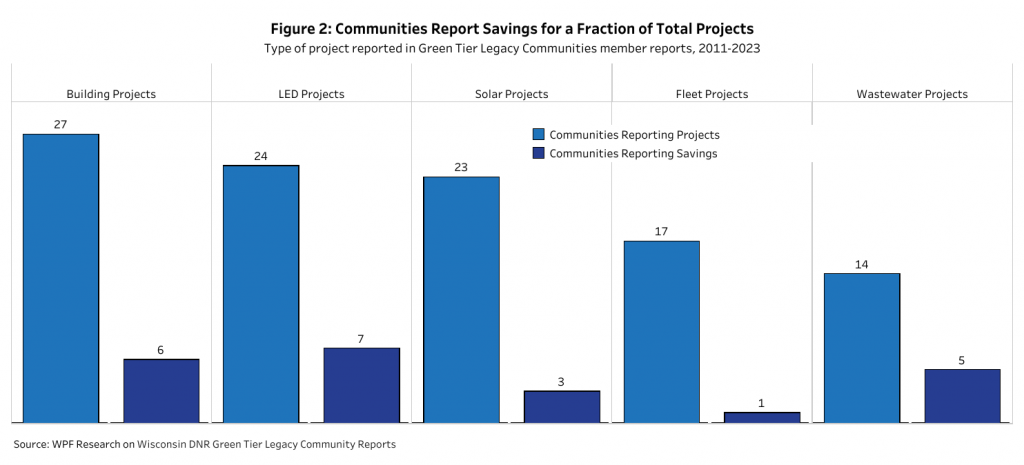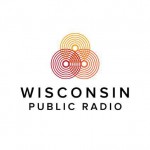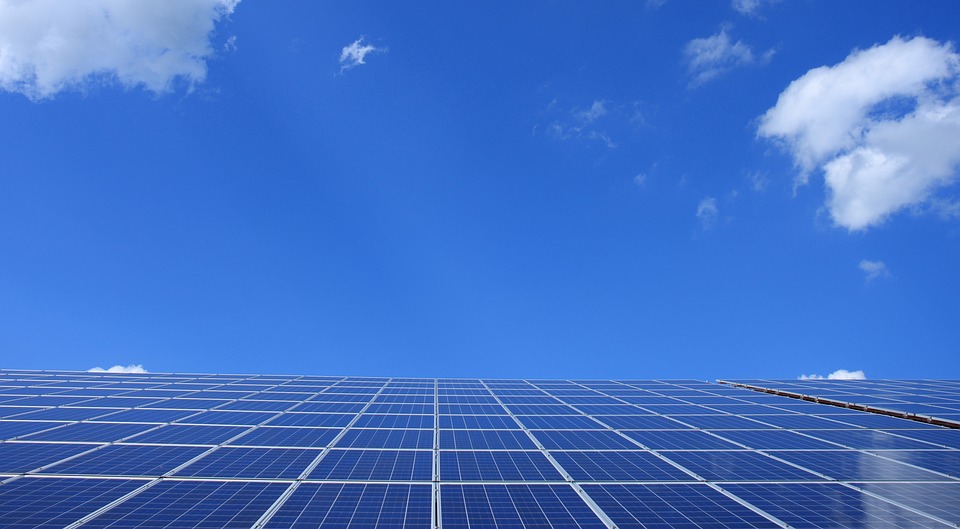Communities Across Wisconsin Embrace Sustainability
Report finds rise in energy efficiency, LED upgrades, wastewater projects.
Communities across Wisconsin have taken steps to become more sustainable over the last decade and a half, but a lack of standardized reporting makes it difficult to measure cost savings from those efforts.
That’s according to a new report from the Wisconsin Policy Forum, which examined data from communities participating in the state Department of Natural Resources’ Green Tier program, a voluntary environmental program for businesses and local governments.
Researchers reviewed 195 annual reports from 34 communities submitted between 2011 and 2023. Unlike road conditions, local sustainability efforts do not have standardized reporting requirements across the state.
That means researchers were able to provide an estimate of reported energy savings, but their findings underestimate the statewide scope of those efforts. For example, the state’s two largest cities, Milwaukee and Madison, do not participate in the Green Tier program but have announced their own sustainability programs, the report said.
“These reports did provide a preliminary set of data that allowed us to look statewide over going back about 15 years to take the first, most comprehensive look anyone’s done at this,” said Tyler Byrnes, a researcher at the Wisconsin Policy Forum. “There were limitations in terms of what was there.”

This map shows where communities participating in the Wisconsin Department of Natural Resources’ Green Tier program are located. The size of the circles represents population measures. Graphic courtesy of Wisconsin Policy Forum
The DNR in 2023 launched new reporting formatting for the Green Tier program that could allow for more consistent reporting, but collecting financial data still falls outside the program’s scope, the report notes.
Among the 34 communities examined, boosting energy efficiency of buildings and lighting replacement were the most common types of projects reported between 2010 and 2023, the forum found.
The policy forum found that 24 communities replaced 9,500 light bulbs with LEDs. That includes replacing street and traffic lights, as well as interior and exterior building lights, the report said. Light replacements saved at least $378,000 across seven communities, according to researchers.
In many cases, Byrnes said energy efficiency improvements and light replacement are easier for communities to do than flashier projects — like converting a municipal fleet to electric vehicles or investing in a solar energy system — because they can be included in projects that a municipality would’ve had to do anyway.
“They’re already upgrading lights [and] they’re already upgrading buildings, so it doesn’t take a new person, or a new program or a new contractor to incorporate energy savings,” Byrnes said. “They can just go ahead and do that as part of an existing project.”
Beyond energy efficiency efforts, 23 communities also reported efforts to install solar panels, but only three provided their estimated cost savings, the report noted. Those communities reported saving $170,000 on purchased electricity between 2011 and 2023.
One of the reasons few communities reported their avoided electricity costs from solar could be because some of those projects might not have broken even yet, the report notes. Solar energy systems require a high up-front investment and can take about a decade to break even.
“It’s possible that projects that were installed in 2018 just haven’t hit their timeline yet,” said Rose Melton, a graduate research fellow at the policy forum. “It’ll be interesting to look in a few years, as these projects continue to age and get closer to their expected payoff.”
In 2021, Appleton installed a solar energy system at its municipal services building, which is expected to generate $28,363 in annual savings, the report noted. That project is estimated to have a payback on the upfront investment within 12 years.

This graphic shows the types of sustainability projects communities are investing in across Wisconsin. Graphic courtesy of the Wisconsin Policy Forum
The largest reported savings of any type of project came from improving energy efficiency of water and wastewater systems, the report said. Fourteen communities reported water or wastewater projects, and five reported saving at least $14.4 million from those projects.
According to the policy forum report, Wisconsin Rapids’ wastewater treatment plant has undergone major upgrades that have reduced energy consumption by generating biogas on-site for heating and power, accounting for about half the plant’s energy usage since 2020. The treatment plant has saved the city roughly $1.4 million in electricity purchases based on national trends, the report said.
Wastewater treatment plants are often the largest municipal energy users, so improving energy efficiency of those facilities “can result in massive reductions in energy purchases,” the report stated. Water utilities and wastewater treatment plants typically account for between 30 to 40 percent of a given local government’s total energy consumption, according to the U.S. Environmental Protection Agency.
Byrnes said local governments often need to upgrade their water and wastewater systems as communities grow or as DNR standards change, so incorporating energy savings into those upgrades can help reduce energy bills for running those facilities.
“If you’re thinking about, ‘We want to save energy and we want to save money,’ this is kind of it,” he said.
Rural Bayfield County completed projects in all of the categories examined in the report, and it used 100 percent carbon-free electricity at county facilities in 2020 through county-owned renewables, Xcel Energy solar and carbon credit purchases, researchers wrote.
A project to install a microgrid, a small power system that can make and use its own electricity, at the Bayfield County Courthouse and jail is expected to save the county more than $12,000 per year in avoided electricity purchases, the report noted. About half of that project cost is covered by a grant.
“Having additional funding can really sort of spur them in that direction,” he said. “Conversely, taking away funding can kind of slow down these sorts of projects.”
Communities across Wisconsin take up sustainability efforts, but it’s hard to measure cost savings was originally published by Wisconsin Public Radio.
If you think stories like this are important, become a member of Urban Milwaukee and help support real, independent journalism. Plus you get some cool added benefits.


















